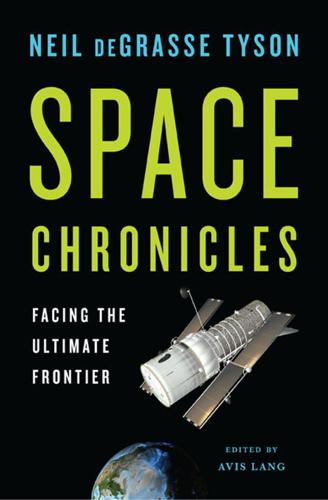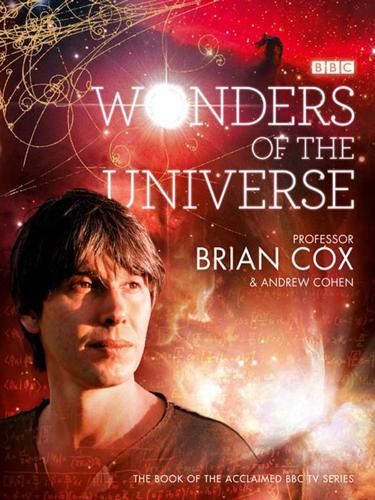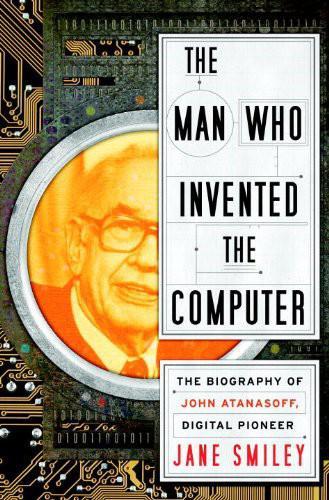
Big Bang
by
Simon Singh
Published 1 Jan 2004
Radio astronomy was opening up a new window onto the universe, discovering entirely new objects and providing critical evidence in the Big Bang versus Steady State debate. Regrettably, Karl Jansky, the father of radio astronomy, received virtually no credit during his lifetime for inadvertently inventing the radio telescope and for making the first radio observations of the sky. He passed away in 1950 at the age of just forty-four. It was only in the decade after his death that radio astronomy would establish itself as a truly major discipline within astronomy. However, Karl Jansky was eventually immortalised. In 1973 the International Astronomical Union recognised his contribution by naming the unit of radio flux in his honour.
…
AT&T was anxious to keep a grip on this lucrative market by offering a high-quality service, so it asked Bell Laboratories to undertake a survey of the natural sources of radio waves, which were interfering with long-distance radio communication by causing a background crackling noise. The task of surveying these annoying radio sources fell to Karl Jansky, a twenty-two-year-old junior researcher who had only just graduated in physics from the University of Wisconsin, where his father had been a lecturer in electrical engineering. Radio waves, like waves of visible light, are part of the electromagnetic spectrum. However, radio waves are invisible and have wavelengths that are much longer than those of visible light.
…
Jansky, however, was determined to get to the bottom of the mystery and spent several more months analysing the baffling interference. Gradually, it emerged that the hiss came from a particular region of the sky and that it peaked every 24 hours. Actually, when Jansky looked at his data more carefully, he found that the peak came every 23 hours and 56 minutes. Almost a full day between peaks, but not quite. Figure 92 Karl Jansky makes adjustments to the antenna that was designed to detect natural sources of radio waves. The Ford Model T wheels are part of the turntable that allowed the antenna to rotate. Jansky mentioned the curious time interval to his colleague Melvin Skellet, who had a Ph.D. in astronomy and who was able to point out the significance of the missing four minutes.

Space Chronicles: Facing the Ultimate Frontier
by
Neil Degrasse Tyson
and
Avis Lang
Published 27 Feb 2012
Lacking this extended vision, we would be not only blind but ignorant, because many astrophysical phenomena reveal themselves only in certain “windows” within the spectrum. Let’s peek at a few discoveries made through each window to the universe, starting with radio waves, which require very different detectors from those found in the human retina. In 1931 Karl Jansky, then employed by Bell Telephone Laboratories and armed with a radio antenna he himself built, became the first human to “see” radio signals emanating from somewhere other than Earth. He had, in fact, discovered the center of the Milky Way galaxy. Its radio signal was so intense that if the human eye were sensitive only to radio waves, then the galactic center would be one of the brightest sources in the sky.
…
When radio emissions from Saturn were discovered, for instance, it was simple enough for astronomers to hook up a radio receiver equipped with a speaker; the signal was then converted to audible sound waves, whereupon more than one journalist reported that “sounds” were coming from Saturn, and that life on Saturn was trying to tell us something. With much more sensitive and sophisticated radio detectors than were available to Karl Jansky, astrophysicists now explore not just the Milky Way but the entire universe. As a testament to the human bias toward seeing-is-believing, early detections of radio sources in the universe were often considered untrustworthy until they were confirmed by observations with a conventional telescope.

The Milky Way: An Autobiography of Our Galaxy
by
Moiya McTier
Published 14 Aug 2022
Remember, this was long before your astronomers even knew they lived in a galaxy, let alone that they shared it with a hateful, churning mass that lurks in the shadows of my guilt, waiting to corrupt and swallow anything that gets too close. Your astronomers just named it after the patch of sky where they detected Sarge’s signal, so any similarity in the name is merely coincidence. It’s actually a funny little human story that started with this man named Karl Jansky. Nowadays, Karl is considered the “father of radio astronomy” and he even has his own unit named after him. The jansky measures flux density, or the amount of energy passing through a specific area in a given amount of time and then normalized by the bandwidth of the telescope receiver. There are other units of flux density used in other human sciences, but the jansky is a special unit that’s useful only for exceptionally dim and small sources with broad continuum emission.

Wonders of the Universe
by
Brian Cox
and
Andrew Cohen
Published 12 Jul 2011
Although each dish works independently, they can be combined together to create a single antenna with an effective diameter of over 36 kilometres (22 miles). This allows this vast virtual telescope to achieve very high-resolution images of the sky at radio wavelengths. Radio astronomy has a history dating back to the 1930s, when the astronomer Karl Jansky discovered that the Universe could be explored not just through the visible part of the electromagnetic spectrum, but also through the detection of radio waves. Over a period of several months, Jansky used an antenna that looked more like a Meccano set than the VLA to record the radio waves from the sky.

The Man Who Invented the Computer
by
Jane Smiley
Published 18 Oct 2010
In 1930, at the same time Atanasoff was working on his dissertation at the University of Wisconsin, Stibitz was working on his at Cornell University. Stibitz’s dissertation, like Atanasoff’s, involved extensive and tedious calculations. But Stibitz went to work for Bell Labs in New York City. Bell Labs, a joint enterprise belonging to Western Electric and AT&T, was in both the discovery business and the invention business. In 1932, Karl Jansky had detected radio noise that originated at the center of the Milky Way; in 1933, Bell Labs scientists had managed to transmit stereophonic sound over telephone wires (a symphony recorded in Philadelphia was transmitted to Washington, D.C.). Stibitz, whose doctorate was in applied mathematics, was surrounded by equipment as well as engineers.

Accessory to War: The Unspoken Alliance Between Astrophysics and the Military
by
Neil Degrasse Tyson
and
Avis Lang
Published 10 Sep 2018
One big problem with long-distance service, aside from the price tag, was, as AT&T itself describes the situation, “Telephone service via available radio technology was far from ideal: it was subject to fading and interference, and had strictly limited capacity.”18 Another, double-edged problem was that few channels were available in the low-frequency, long-wavelength part of the radio spectrum, while the higher-frequency, short-wavelength part of it—the part that could carry much more information—was still unfamiliar territory, scientifically and technologically. Not until it was mastered could there be live FM stereo broadcasts from the Metropolitan Opera, which began in the 1970s. But let’s not get ahead of ourselves. In 1928 AT&T’s three-year-old R & D facility, Bell Telephone Laboratories, hired a young physicist named Karl Jansky to study Earth-based radio sources that might account for all the hissing and fading—the noise, the static—in terrestrial radio communications. After constructing a novel rotating antenna, tuned to capture a radio wavelength of 14.6 meters (frequency: 20.5 MHz), Jansky spent several years waiting for signals to drift by his receiver, studying the signal patterns, and scrupulously interpreting the results.
…
., also a radio engineer, called his brother Karl’s work on noise “in effect a wedding ceremony” between pure science and applied science, pointing out that he himself (and by implication, most people working in S & T) “used to define a pure scientist as one who if he saw a practical application of what he was doing somehow felt contaminated by commercialism and an applied scientist as one who if he could not see a practical application of his work would lose interest.” C. M. Jansky Jr., “My Brother Karl Jansky and His Discovery of Radio Waves from Beyond the Earth,” Cosmic Search 1:4, www.bigear.org/vol1no4/jansky.htm (accessed Nov. 3, 2015). 21.Grote Reber, “A Play Entitled the Beginning of Radio Astronomy,” J. Royal Astronomical Society of Canada 82:3 (June 1988), 94, adsabs.harvard.edu/full/1988JRASC..82...93R (accessed Apr. 19, 2017). 22.For Jansky’s own detailed description of this apparatus, see Jansky, “Directional Studies,” 4–7. 23.Lisa Grossman, “New Questions about Arecibo’s Future Swirl in the Wake of Hurricane Maria,” ScienceNews, Sept. 29, 2017, www.sciencenews.org/blog/science-public/new-questions-about-arecibos-future-swirl-wake-hurricane-maria (accessed Oct. 28, 2017). 24.Cheng Yingqi and Yang Jun, “Massive Telescope’s 30-ton ‘Retina’ Undergoes Final Test,” China Daily, Nov. 23, 2015, www.chinadaily.com.cn/china/2015-11/23/content_22509826.htm (accessed Apr. 19, 2017). 25.Initially the British called their version RDF, or radio direction finding.

The Idea Factory: Bell Labs and the Great Age of American Innovation
by
Jon Gertner
Published 15 Mar 2012
A discovery often describes a scientific observation of the natural world—the first observation of Jupiter’s moons, for example, or the isolation of a bacteria that causes a deadly plague. Also, a discovery could represent a huge scientific achievement but an economic dead end. In the early 1930s, for instance, at the Bell Labs radio facility in Holmdel, New Jersey, a young engineer named Karl Jansky created a movable antenna to research atmospheric noise. With this antenna, he observed a steady hiss emanating from the Milky Way. In this moment, Jansky had essentially started the field of radio astronomy—a discovery that paid a lasting dividend to his and Bell Labs’ renown. On the other hand, it never led to any kind of profitable telecommunications invention or device.28 John Bardeen, the most careful of men, referred to his transistor work as a “discovery” of “transistor action”; he and Brattain had effectively observed in their experiment how a current applied to a slightly impure slice of germanium could hasten the movement of microscopic holes inside and thus amplify a signal.

Coming of Age in the Milky Way
by
Timothy Ferris
Published 30 Jun 1988
Noteworthy Events: Kurt Gödel’s second incompleteness theorem indicates that the consistency of any system, including scientific systems, cannot be proved internally—i.e., that mathematics, and science are inherently open-ended. Time: 1932 Noteworthy Events: James Chadwick discovers the neutron. Noteworthy Events: Carl Anderson, without knowing of Dirac’s 1931 paper postulating its existence, discovers the positron. Noteworthy Events: Karl Jansky finds that the Milky Way emits radio waves, opening door on the science of radio astronomy. Time: 1935 Noteworthy Events: Hideki Yukawa predicts existence of the meson. Time: 1939 Noteworthy Events: Niels Bohr and John Archibald Wheeler develop the theory of nuclear fission. Noteworthy Events: Hans Bethe and Carl Friedrich von Weizsäcker independently arrive at theory of the carbon and proton-proton reactions in stars.